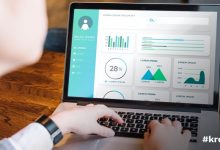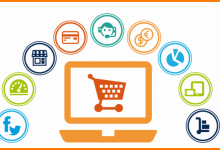5 Tools and Tactics to Use Customer Data to Grow Your Ecommerce Business

Index Of The Blog

Customers. Your Ecommerce business rests in their hands, so it’s safe to say that you should get to know them, and acquire as much information about your customer group as you can. When you have the right customer data in your hands, you have everything you need to increase employee productivity, improve brand visibility, trust, and authority, and drive numerous processes in your company forward – from customer support to innovation, customer data should be the foundation of every decision you make.
That said, oftentimes Ecommerce entrepreneurs will struggle with obtaining all of that data in an efficient and effective way, after which they will have trouble organizing it into actionable reports and applying that information towards concrete solutions. Sure, it might seem like a cumbersome task at first, but keep in mind that it can become a straightforward process if you follow the right steps. That’s why today we will be talking about the best tools and tactics you can use to leverage customer data for Ecommerce success.
Map your customer’s journey
First and foremost, it’s important that you understand the journey your customers take from the point of contact with your brand to the moment they opt to buy something from your online shop. The conversion process is long and arduous for many customers, which is why you need to map their journey to identify pain points and hurdles so that you can reduce customer effort and simplify the road to conversion, and more importantly, long-term customer loyalty. To do this, you can utilize your human resources and some advanced analytics tools.
Begin by using handy tools that will reveal the road that your customers take when navigating your website. These are usually called heat maps and interactions, which map how the customer uses your website, where they linger the most, how much time they spend on your site, and when they decide to leave your store. Combine that information with surveys and questionnaires, and you can get a clear view of your website’s performance in the eyes of your visitors and customers.
Monitor KPIs and collect data
To be successful, every growth-oriented Ecommerce leader needs to monitor the key Ecommerce KPIs that reveal valuable information about customers, the brand itself, the company’s digital presence, and more. Now, there are many KPIs you should keep track of, but when it comes to collecting customer data, there are a few KPIs that should take top priority on your list.
This is typically a mix of customer service, customer experience, sales, and marketing KPIs, so be sure to have team leaders from all of these departments weigh in. Among these KPIs you will find your traffic KPIs (organic, social, paid, direct), conversions by traffic source, new vs returning visitors, funnel abandonment, average order value, customer drop-out point, customer effort, churn rate, brand sentiment, and more. To make sense of all of this data, your next step is to organize all of it into a good report.
Put that data into comprehensive reports
One of the major problems marketers and business leaders face is not obtaining relevant customer data, it’s putting it into a report that makes sense and clearly outlines the next steps in their growth strategy. You see a report is not just a document where you will put your findings, it’s a detailed document that will showcase the results, identify threats, weaknesses, strengths, and opportunities, and outline a roadmap to bigger and better things.
To do all of this without wasting time and human resources, it’s important to use an innovative and centralized marketing dashboard that allows you to track all data in one place, and generate actionable reports in minutes instead of hours or days. Remember, speed is crucial for Ecommerce success, so you need to leverage smart tools to create reports quickly that will allow you to improve all processes and adapt your strategy on a moment’s notice.
Use customer data to improve your digital presence
Now that you have collected the data you needed and that you have created comprehensive reports, you can start implementing positive changes into your online presence as a whole. Be sure to prioritize maximize productivity and ensure that nothing slips through the cracks. Start with your primary revenue source, your site, and make the necessary changes to your content, CTAs, SEO, as well as the general flow and functionality of the store.
After that, continue to improve your content strategy and your link-building approach to maximize your SEO efforts across the web. Don’t forget to act on your social media reports as well, and strive to engage your customers on all relevant networks as much as possible through quality posts, replying to comments, and interacting via DMs.
Leverage these insights for brand-building
Last but not least, never forget that you can use almost every piece of customer data to improve the overall brand experience, and your brand as a whole. Building a unique and powerful brand takes time and effort, and it should mostly be based on customer data – simply because you are building a brand for your customers, not yourself.
Be sure to leverage the data you’ve collected to gauge the overall brand sentiment, recognition and stickiness, but also its trustworthiness and authority in your niche. This will allow you to slowly optimize your brand to the exact liking of your audience, and attract more quality leads to your site while boosting visibility, awareness, and relevance.
Wrapping up
In the E-commerce world, the customer typically knows best, at least when it comes to the type of experience the modern shopper is looking for. Take these tips to heart, and use them to gather important customer data, create amazing reports, and building a better ecommerce brand.













